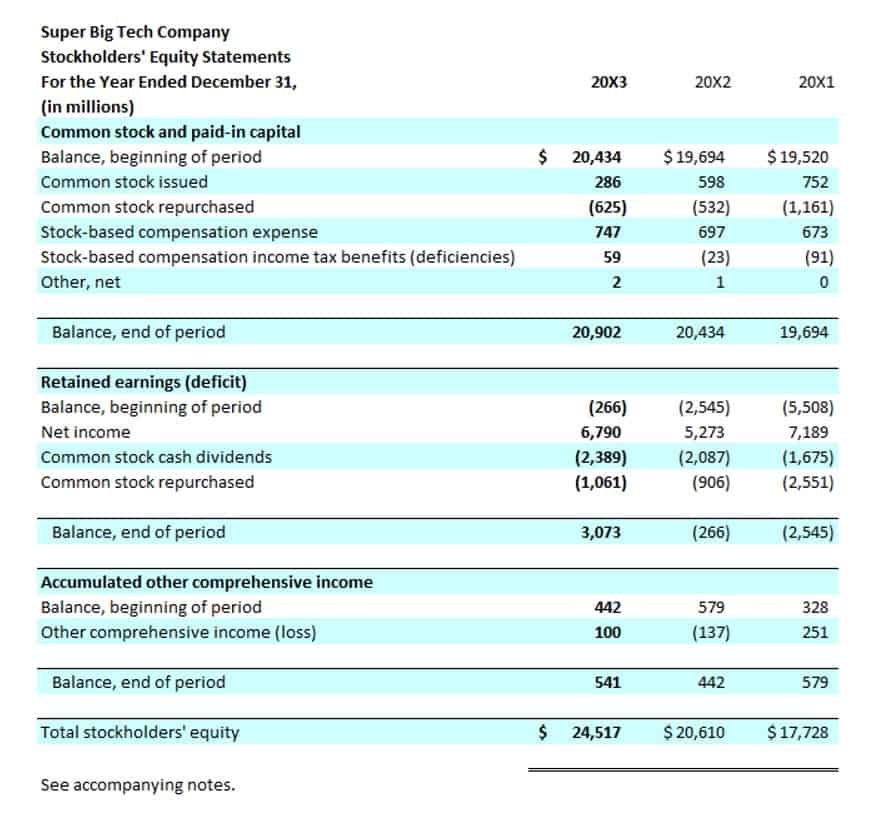
Each company needs to be profitable to continue in business in the future. A new business will close quickly if the company is insolvent, but may survive several years before the company makes a profit. Every company must be solvent with the ability to pay its debts on time. The company will fail quickly if it cannot pay its employees, suppliers, and creditors.
Financial Accounting Sample Exam 1
For instance, assets and liabilities might be categorized as current or long-term or labeled by type. The equity variable QuickBooks Accountant might be broken down into categories such as capital contributions and retained earnings. As a result of this transaction, the asset (cash) and the owner’s equity (expenses) both decreased by $2,000.
What’s the difference between the accounting equation and double-entry bookkeeping?
It’s the amount that would remain if the company liquidated all its assets and paid off all its debts. The remainder is the shareholders’ equity which would be returned to them. Liabilities are debts that a company owes and costs that it must pay to keep running. Debt is a liability whether it’s a long-term loan or a bill that’s due to be paid. Costs can include rent, taxes, utilities, salaries, wages, and dividends payable. If Robert had posted any of the above transactions incorrectly, his balance sheet would not have been balanced.
Impact of transactions on accounting equation
A corporation’s own stock that has been repurchased from stockholders. Also a stockholders’ equity account that usually reports the cost of the stock that has been repurchased. Liabilities also include amounts received in advance for a future sale or for a future service to be performed.
- It helps businesses maintain transparency and consistency in their financial statements, enabling stakeholders to assess the company’s financial health.
- Similarly, when a business issues new shares, both assets (cash) and equity increase.
- The relationship between assets, liabilities, and owner’s equity can be expressed as an equation, as will be shown in the following example.
- The totals tell us that as of midnight on December 6, the company had assets of $17,200.
- Below is a break down of subject weightings in the FMVA® financial analyst program.
As new entries are added to the business’s balance sheet, the total net worth or income statement is adjusted to accurately reflect the business’s financial performance. Double-entry bookkeeping applies this balancing process by requiring a debit and credit amount to be entered for each financial transaction. When the debit and credit columns of an entry are combined, the result represents the transaction’s effect on the business’s income or equity.

Doesn’t Assess Performance AloneWhile it shows position, it doesn’t reveal how efficiently a company is operating—that’s where ratios and income statements come in. Decision-MakingBusiness owners use the equation to understand how decisions (like taking on debt or buying new assets) impact overall equity. Net value refers to the umbrella term that a company can keep after paying off all liabilities, also known as its book value. It specifically highlights the amount of ownership that the business owner(s) has. Money owed to the business (accounts receivable) by its customersShort term investments such as a term deposit that matures within a year.

For the past 52 years, Harold Averkamp (CPA, MBA) hasworked as an accounting supervisor, manager, consultant, university instructor, and innovator in teaching accounting online. When inventory items are acquired or produced at varying costs, the company will need to make an assumption on how to flow the changing costs. Our examples assume that the accrual basis of accounting is being followed. Since the statement is mathematically correct, we are confident that the net income was $64,000. Our examples assume that the accrual basis of accounting is being used. That will be followed by looking at similar transactions at a corporation.

Regularly monitoring the equation ensures that all business activities are recorded properly and that the company remains financially healthy. Recording accounting transactions with the accounting equation means that you use debits and credits to record every transaction, which is known as double-entry bookkeeping. Accounts payable include all goods and services billed to the company by suppliers that have not yet been paid. Accrued liabilities are for goods and services that have been provided to the company, but Accounting Periods and Methods for which no supplier invoice has yet been received.
- Liabilities are obligations that the company owes to external parties, such as loans, accounts payable, and mortgages.
- For both accounting professionals seeking to refine their expertise and business owners aiming to bolster their financial acumen, mastery of this equation is indispensable.
- However, the equity account will change as a result of the special adjustment which moves the profit or loss into it.
- Accountants use it as a control mechanism to verify the integrity of records.
- The accounting equation is also known as the balance sheet equation or the basic accounting equation.
- Negative owner’s equity isn’t always a sign of trouble but it is a risk indicator.
- This transaction affects both sides of the accounting equation; both the left and right sides of the equation increase by +$250.
How the Equation Reflects in the Balance Sheet
For instance, an internally developed intangible asset that is necessary for companies in technology, media, and other innovative sectors is not typically recorded. As a result, this presents an incomplete picture of a company’s true market value. Historical cost is the original price paid for an asset without accounting for changes in its value over time. While this approach is quite straightforward and can be verified, the accounting equation is usually expressed as it does not consider the impact of inflation, depreciation, market fluctuations, and other factors.
- For instance, when a company takes out a loan, assets (cash) increase, as do liabilities (loans payable), which keeps the equation balanced.
- As a result of this transaction, the asset (cash) and owner’s equity (expenses) both decreased by $4,000.
- AssetsResources owned by the business that have economic value (e.g., cash, inventory, equipment, real estate, receivables).
- We also show how the same transaction will be recorded in the company’s general ledger accounts.
- Time value of money (TVM) refers to the concept that money available today is worth more than the same amount in the future due to its earning potential.
- The total amount of all assets will always equal the sum of liabilities and shareholders’ equity.
However, a reduction in assets reduces both the asset and liability or equity side to keep the equation balanced. This equation should be supported by the information on a company’s balance sheet. The Accounting Equation is the foundation of double-entry accounting because it displays that all assets are financed by borrowing money or paying with the money of the business’s shareholders. Assets represent everything a business owns, including cash, inventory, and property. Liabilities are the debts or obligations that the business owes, such as loans or accounts payable. Owner’s equity is the residual value left over after liabilities are subtracted from assets, essentially reflecting the owner’s claim on the business after debts are settled.

